The 24 Most Scenic Campgrounds in the United States
Take a road trip from coast to coast, and you’ll find beautiful sights in every state in the U.S. You may be wondering, “what are the best places to camp near me?” One of the best things about traveling around the U.S. is that there are so many great places to camp. Nature lovers can enjoy the fresh air, glorious mountains, and clear lakes and streams during a weekend (or longer) camping trip. Not only can you set up a tent at these picturesque locations, you can also enjoy plenty of picnic areas, hiking trails, fishing, swimming, and more activities in the great wide wilderness. From the piney woods of Maine to the crisp lakes of Alaska, your perfect outdoor trip awaits.
Related: The Most Scenic View In London
While many of these parks have distinct, built-up camping grounds to choose from with running water and electricity for RV parking (great for road trips), more experienced outdoors people can also find plenty of locations for backcountry camping where they can really rough it.
Take a look at some of the best places to camp around the U.S., and don’t forget to bring your sleeping bag — and your camera. Some campgrounds are currently closed or limiting capacity due to the COVID-19 pandemic, so be sure to check their websites before you plan your trip.
Acadia National Park, Maine

Located on Mount Desert Island, Acadia National Park is the Pine Tree State’s natural jewel. The park boasts 17 million acres of forest, 6,000 lakes and ponds, and 32,000 miles of rivers and streams to offer a scenic backdrop to your hiking and camping. The park has three campgrounds to set up your tent: Blackwoods (close to Bar Harbor), Seawall (less touristy), and Schoodic Woods (on the Schoodic Peninsula). Acadia is undergoing a phased reopening — campgrounds will be opening no earlier than July 1, but many hiking trails are currently open. Check the Acadia National Park website for more information.
White Mountain National Forest, New Hampshire and Maine

If you’re looking for a rugged hike, look no further than this northernmost part of the Appalachian Valley. The sights are particularly magical in the fall when leaf-peeping season is at its peak. Plus, the forest has several campgrounds with a combined hundreds of campsites. Currently, several campgrounds, climbing areas, and shelters remain closed.
Minnewaska State Park Reserve, New York

Only 94 miles outside of New York City, this state park reserve sits on Shawangunk Ridge, more than 2,000 feet above sea level, surrounded by rocky terrain. That’s a lot of space to hike, bike, and especially enjoy the view. The park is currently operating with a reduced capacity, and some facilities are closed — the adjacent campground is also temporarily closed.
Shenandoah National Park, Virginia

A short drive from Washington D.C., Shenandoah National Park has 500 miles of trails, including an eight-mile hike up Old Rag Mountain that’s a must-do for avid hikers. This glorious park gives you plenty of lush views of forest and waterfalls. Its facilities are open in the spring, summer, and fall, and it has five campgrounds to choose from. The park has reopened, but campgrounds are currently operating at reduced capacity.
Assateague Island National Seashore, Maryland

The Assateague Island campgrounds are only nine miles south of Ocean City, with 37 miles of beaches for camping, swimming, surfing, paddle-boarding, crabbing, biking, kayaking, and spotting wild horses. Assateague Island National Seashore reopened some campgrounds on June 15, but group campgrounds and some facilities are still closed.
Dry Tortugas National Park, Florida

You can have one of the world’s largest barrier reefs right outside your tent in this beautiful park. Campers can rent some snorkel gear and spend their days on the beach or explore Fort Jefferson. This area is also great for bird-watching, so make sure you pack a pair of binoculars. The campground is currently open, but tours of the fort and ranger-led programs are temporarily suspended.
Big Bend National Park, Texas
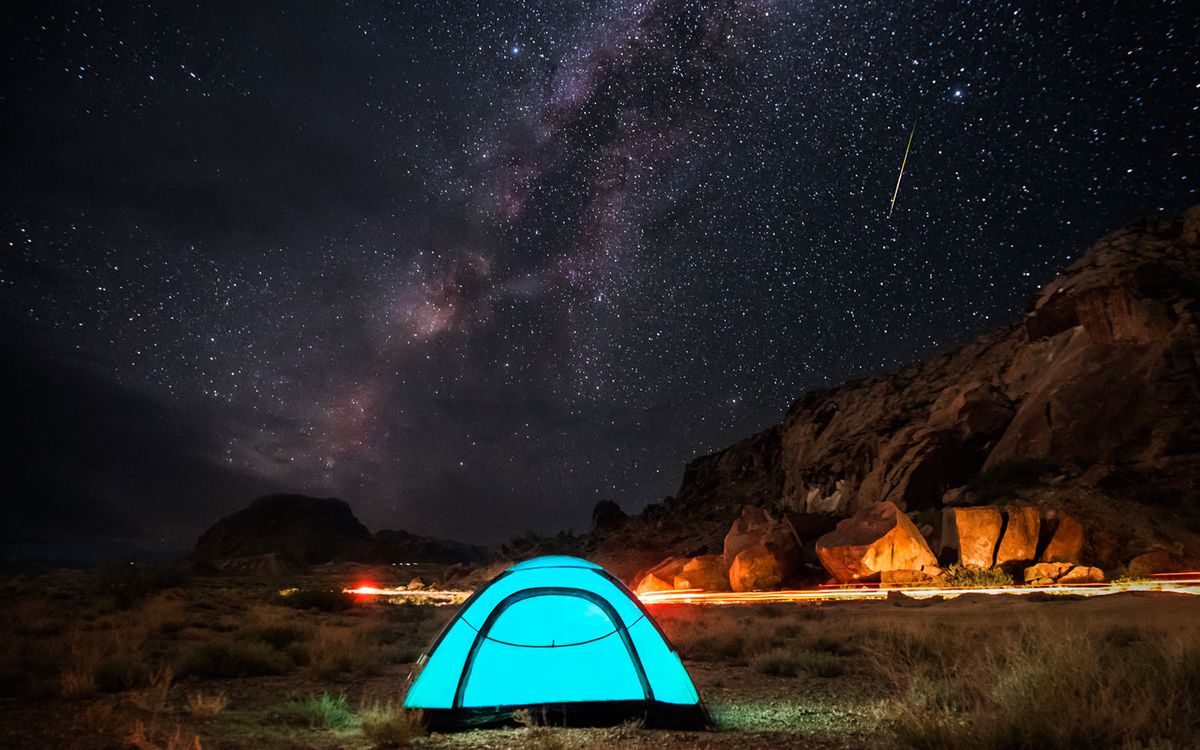
If you’re looking for a great place to go rafting, canoeing, and kayaking, Big Bend National Park along the Rio Grande is an excellent place to go. There are also trails along the park’s desert, mountain, and river landscapes for hiking or backpacking. You’ll find three developed campgrounds there, as well as backcountry camping. Currently, the park is open, and one campground is operating at reduced capacity, while other facilities, including visitor centers, remain closed.
Ozark National Forest, Arkansas

Arkansas has loads of countryside that is often overlooked. Here, you’ll find nine beaches, thousands of acres of lakes and streams, and 400 miles of hiking trails. Campers can choose between a number developed campgrounds for RV and tent camping. Several campgrounds and recreational areas are still closed, but some have reopened with restrictions.
Badlands National Park, South Dakota

Don’t underestimate the beauty of the Badlands. The climate may be rough, but it’s still gorgeous. Between the many rock formations you’ll see there, you’ll also find prairies and places to peek at ancient fossils. There are two choices of campgrounds: Cedar Pass (with amenities like running water, electricity, etc.), and Sage Creek (with no running water — but you can often see bison wandering around). Trails and campgrounds in the north unit of the park are open, but the visitor center and the south unit of the park remain closed.
Sawtooth National Forest, Idaho

The steep Smoky Mountains offer stunning views, practically like a Bob Ross painting. There are dozens of campgrounds at this national forest, but one of the best spots is Sawtooth National Recreation Area. Some recreational sites have reopened — check out this map to see which are still closed.
Glacier National Park, Montana

There are 13 developed campgrounds and more than 1,000 sites so you can stay and bask in the beautiful views of glaciers. Hikers can also enjoy 700 miles of trails through forests, meadows, and mountains. Opening dates for Glacier National Park’s campgrounds have not yet been determined.
Grand Teton National Park, Wyoming
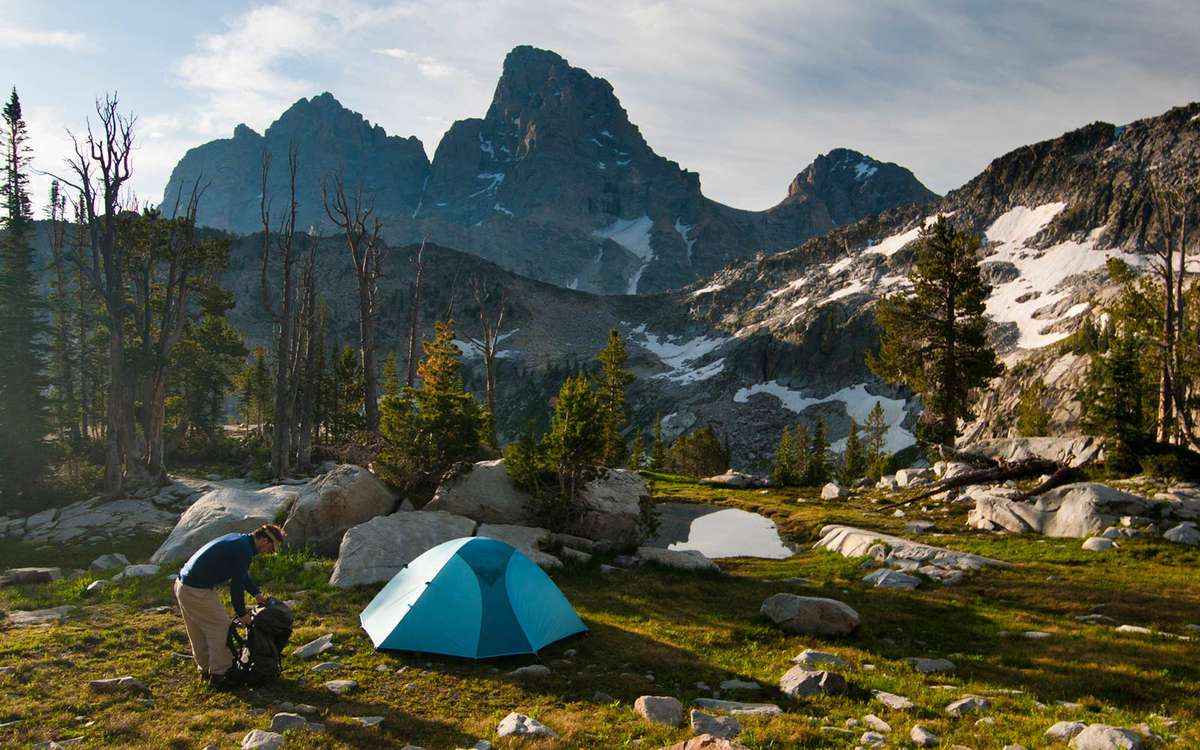
Just north of Jackson Hole, you can peek at the Rocky Mountains and see plenty of wildlife and lakes. It’s also located next to the National Elk Refuge, where you can spot hundreds of elk, depending on when you go. You can stay at one of the six campgrounds in Grand Teton National Park, but Signal Mountain in particular has the best reviews. Campgrounds are currently open, and most facilities are open with restrictions, although the Jenny Lake Visitor Center, exhibits, and a few other venues are currently closed.
Gunnison National Forest, Colorado
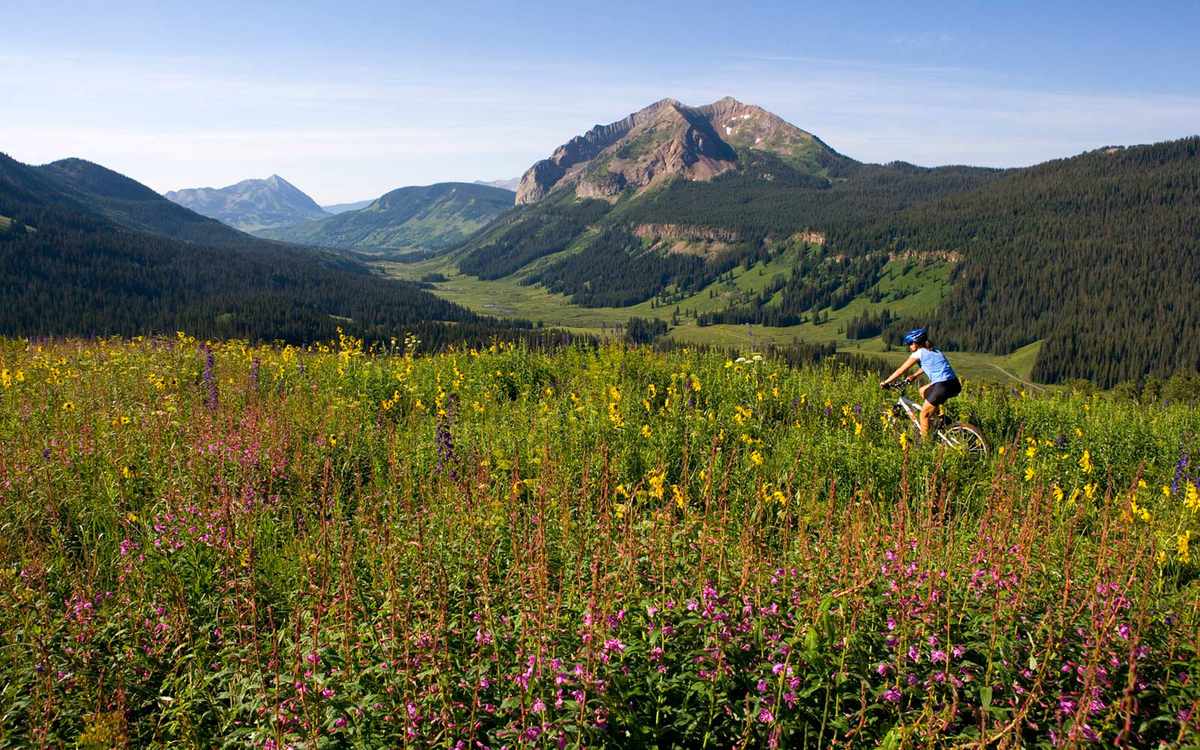
With 3,000 miles of trails and 1.6 million acres of public land, you’re guaranteed a beautiful view of the Rocky Mountains here. Gunnison also offers a variety of landscapes among its 30 campsites, including ones on open meadows, evergreen forests, mountains, and right by the lakes. Some campgrounds and facilities are currently closed, while others are open with reduced capacity — you can find the full list of open campgrounds on the Gunnison National Forest website.
Arches National Park, Utah

Nothing beats waking up on a cold morning to see fresh, white snow set against the red rocks of Arches National Park. One of the most popular trails, the Delicate Arch Trail, takes you on an amazing hike full of photo opportunities. The park only has one campground, The Devils Garden, which has 50 campsites, but there are other places to camp nearby in the Moab area. Although the roads and trails have reopened at this park, the campground and visitor center remain closed.
Arch Rock Campground, Nevada

Just 55 miles from Las Vegas in the Valley of Fire State Park, Arch Rock Campground is a quiet campground surrounded by dramatic red sandstones. The park is currently open, and the two campgrounds are also open with reduced capacity.
Grand Canyon National Park, Arizona
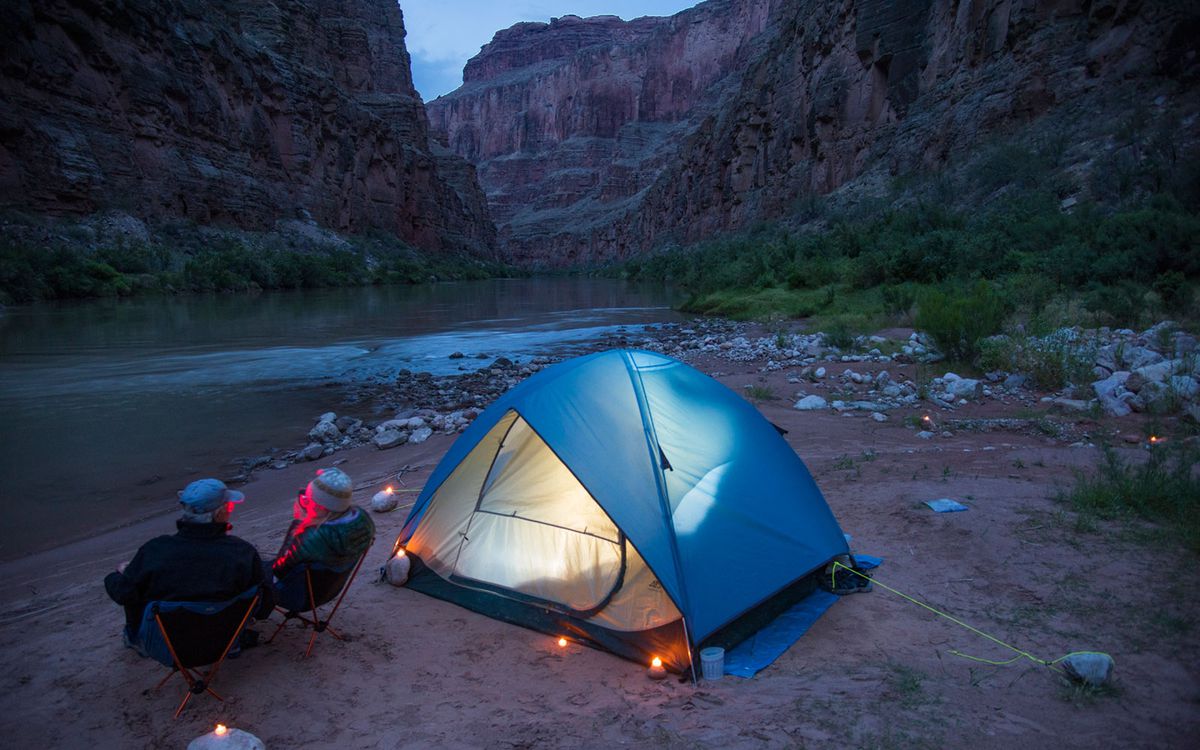
There’s no place like the Grand Canyon if you want a stunning view. Reservations are recommended for two of the three developed campgrounds during the summer. Backcountry camping is also allowed with a permit. While the South Rim is easier to get to, it can get a little crowded. For a more secluded stay, try the North Rim, if you don’t mind having a slightly harder time getting there. The park is currently undergoing a phased reopening, and campsites on the South Rim are gradually starting to reopen with restrictions, but the North Rim campground is closed until July.
Carlsbad Caverns National Park, New Mexico

Carlsbad Caverns National Park hosts full moon walks where rangers answer questions about the nocturnal creatures in the area, local lore, and astronomy. It’s also a great place to spot bats in the caves in late summer and early fall. Inexperienced campers beware, though, there is only backcountry camping, and all campers are required to get a permit. Bat Flight Programs are temporarily paused due to social distancing concerns, but the caverns have reopened with new precautions in place.
Olympic National Park, Washington

There’s nothing like camping next to this beautiful coastline, marked by several sea stacks. Olympic National Park has 14 different campgrounds, some next to the ocean and others in the rain forest, so you can enjoy a variety of landscapes. The park is beginning a phased reopening, and campgrounds and visitor centers are closed.
Crater Lake National Park, Oregon

This park is home to the United State’s deepest lake and a sleeping volcano, so there are plenty of photo opportunities for nature lovers. Campers can choose between Mazama (for RV and tent camping) and Lost Creek (tents only) campgrounds. And yes, there’s also backcountry camping with a permit. Park information centers are currently closed, and some activities are canceled although the park has reopened, but the park has not announced an opening date for the campgrounds, which usually open for the season in June or July.
Joshua Tree National Park, California
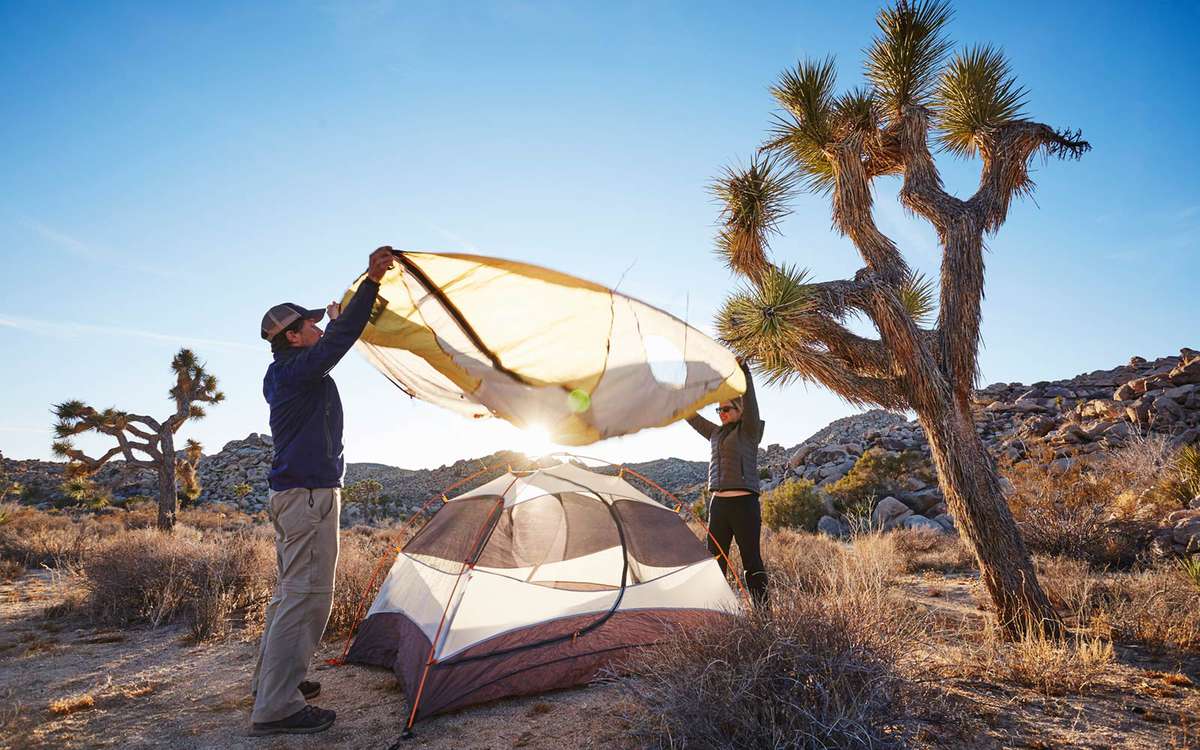
There are a number of campsites located in this park, including Jumbo Rocks Campground, known for its big boulder rocks that shelter sites from the wind. But you can also choose between the park’s 100+ sites among its 800,000 acres, which are all first-come, first-serve right now. Campsites are currently open at the park, but all programs are canceled.
Yosemite National Park, California
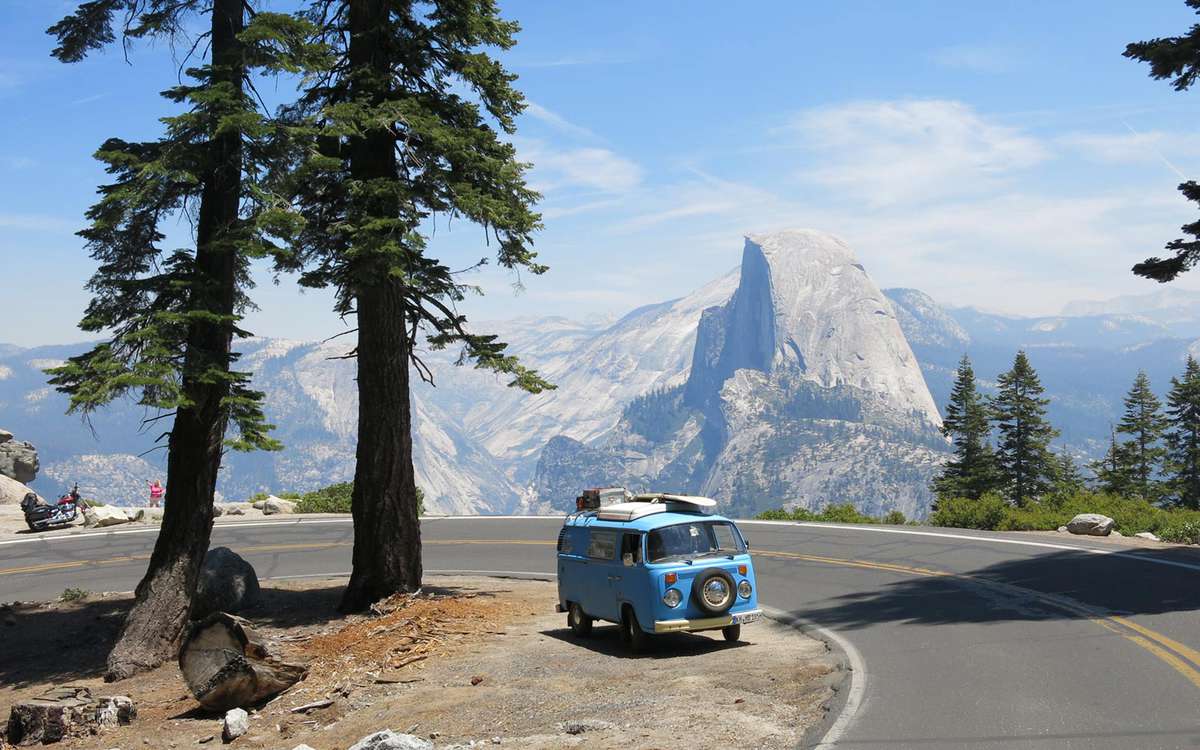
Everyone who loves nature has to go to Yosemite National Park at some point in their lives, especially for a good camping trip. Nearly 95% of the park is designated wilderness, and there are 13 popular campgrounds scattered throughout the park, as well as backcountry camping for people who really want to rough it. Currently, only the Upper Pines campground is open, and the park requires reservations for entry, even for day use.
Sequoia and Kings Canyon National Parks, California
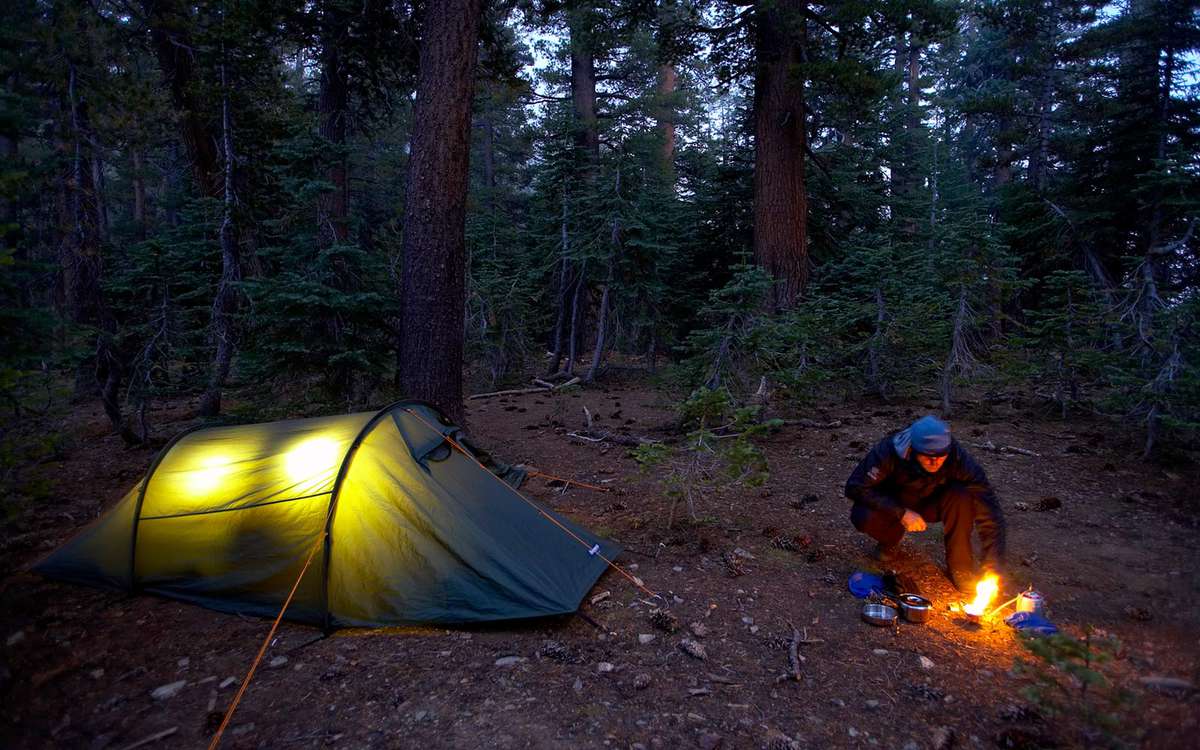
Want to see some of the biggest trees in North America? Look no further than these national parks. Set up camp among the 14 main campgrounds in Sequoia and Kings Canyon. Most campgrounds are usually first come, first served, but that is not the case this year — the parks require that campers make reservations for the remainder of the 2020 season when they reopen. These parks are currently open, but all facilities, including campgrounds, are closed.
Haleakala National Park, Hawaii

The biggest draw of this state’s national park is a 10,023-foot dormant volcano, which is a great spot to camp for the best views of Hawaii’s natural landscape. You can choose to stay in the Kīpahulu Area, the Summit Area, or the Wilderness Area when these sites reopen — these campgrounds, visitor centers, and some trails are currently closed.
Denali National Park, Alaska

If you’ve never been to Alaska, you’re missing out. Some of the United States’ most beautiful scenery can be found there. Denali National Park offers six million acres of land to see wildlife, beautiful trails, and plenty of plants, creeks, and mountains, including Mount McKinley, North America’s tallest peak. Choose from six established campgrounds with a combined 291 sites. Most campgrounds have plans to reopen this summer — exact dates can be found on the Denali National Park website.
Source: https://bit.ly/3tbVYsL




